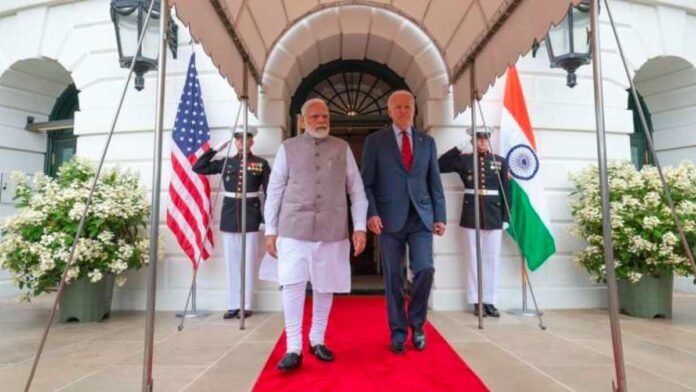35 research agreements have been signed focusing on quantum, AI, and telecommunications. The agreements are between India’s Department of Science and Technology and the US National Science Foundation.
The US National Science Foundation signed 35 research agreements with India’s Department of Science and Technology and a new collaboration agreement with the Ministry of Electronics and Information Technology to study emerging technologies.
The US-India technology relationship will determine future technological advances.
To encourage collaborative research in quantum technology between the public and corporate sectors of both nations, the Indo-U.S. Quantum Coordination Mechanism was developed.
India and the US have agreed to an implementation agreement to enhance joint research on advanced wireless, AI, and quantum technologies. Based on a $2 million grant from the U.S.-India Science and Technology Endowment Fund, this agreement aims to develop and market quantum and AI technology together.
Google is aggressively developing models to support more than 100 Indian languages through its AI Research Center in Bengaluru. Collaborations with organizations like the Indian Institute of Science and IIT Madras are focused on creating a Center for Responsible AI and open-sourcing voice data for AI models, respectively.
Joint Task Forces between the public and commercial sectors have been established in the field of modern telecommunications. These task groups are primarily concerned with the creation and implementation of Open RAN systems as well as cutting-edge telecom research and development.
By establishing uniform connections across various network components, Open RAN is a collection of interface standards that aids in lowering the cost of wireless networks.
In order to advance research in this field, lower prices, increase network security, and boost resilience, the Bharat 6G effort in India and the Next G Alliance in the United States will work together.
Additionally, funding from the United States International Development Finance Corporation will assist the beginning of Open RAN deployments in both nations in collaboration with USAID (United States Agency for International Development). This partnership intends to increase the technology’s scalability and competitiveness in global markets.
Conclusion
The US National Science Foundation has announced 35 research collaborations with India’s Department of Science and Technology, focusing on emerging technologies like quantum, advanced computing, AI, and telecommunications. These partnerships aim to boost economic and industrial growth while addressing security issues.
The Indo-U.S. Quantum Coordination Mechanism encourages collaborative research in quantum technology between the public and corporate sectors. Google is developing models for over 100 Indian languages, and collaborations with organizations like the Indian Institute of Science and IIT Madras focus on responsible AI and open-sourcing voice data. Joint Task Forces in modern telecommunications are established to create and implement Open RAN systems, lowering wireless network costs.
The Bharat 6G effort in India and the Next G Alliance in the United States will collaborate to advance research, lower prices, increase network security, and boost resilience.




